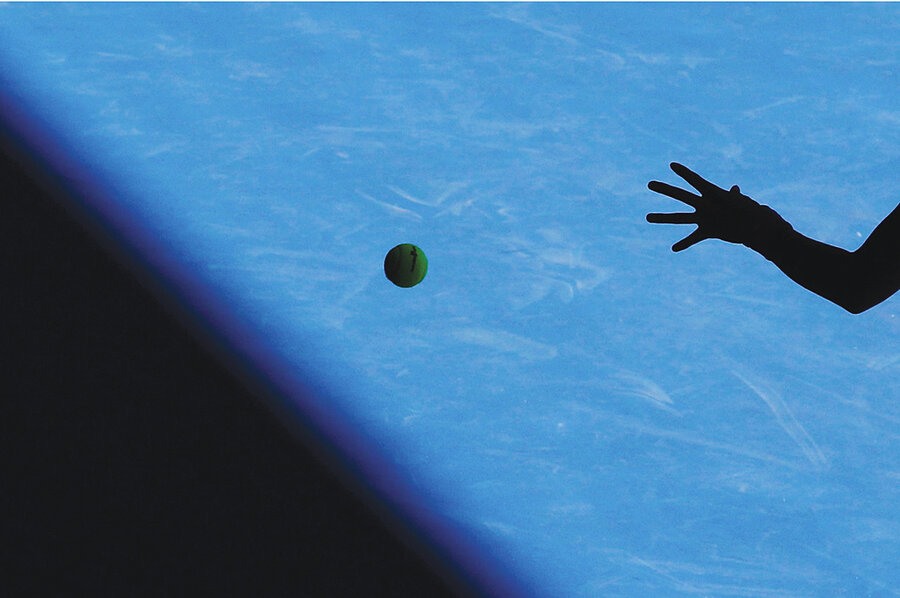A bus-stop tennis clinic
Loading...
During the winter of 2002, I had the opportunity to teach tennis at a luxury hotel in Nevis, an idyllic spot in the British Virgin Islands in the Caribbean. My experience teaching and staying on the island was awe-inspiring. The island was sublime and the clientele, employees, and Nevisians could not have been more gracious. But it was also hard work!
After several weeks of teaching eight to 10 hours a day, I was the one ready for a vacation! I had anticipated this and had planned a surfing outing at a surf camp in Panama with my lifelong buddy, Clayton, after my teaching stint. I flew into Panama City with all my tennis bags, and off we went to the remote Bay of Chiriqui, on the western end of Panama's Pacific coastline.
To get to the camp, we had to load Clayton's surfboards and my tennis gear on and off several buses and boats. After eight hours of travel we finally arrived.
The camp was perfect for a couple of bachelors used to camping in Baja California, Mexico. The accommodations were sparse, but ample for what we required. The rooms had thatched roofs, and aside from the giant scorpion we found, they were ideal. I rented a board from the camp and we had an unbelievable week surfing good, uncrowded waves in warm water.
On our return trip, we made the boat connections, but when we got to the bus depot we learned that our bus back to Panama City had been delayed by 2-1/2 hours. The tropical sun was beating down on us, and the only shade was under a canvas canopy over a six-foot-wide slab of concrete with some chairs, next to the bus terminal attendant's office.
As I walked over to the shaded area, a couple of kids who were also waiting for the bus started throwing rocks at me. Thinking quickly, I reached into my bag and opened a can of tennis balls. The kids stopped throwing rocks and took an interest in the bright-yellow orbs. I had a special racket with me: It had the strings cut out and replaced with a net. (I used it as a teaching tool.) I approached the youngsters and gave them the tennis balls. I got them to throw the balls into the net instead of throwing rocks at me. They seemed to enjoy that.
Then an older boy got interested. He joined the game we had started under the canopy. As he seemed a bit more coordinated than the youngsters, I gave him a racket to try to hit the ball into the net of the catching racket. He didn't need much coaching. As soon as I showed him how to position and hold the racket, his mom took over, giving him direction every time he missed hitting the ball into the catching net.
Soon, their bus arrived, and they were on their way. But the clinic had just started. Families from across the street came over and wanted their 10-minute tennis lesson, too. The other passengers waiting for the bus each got a lesson.
Eventually, restaurant workers next door invited us to use the hammock in the middle of their patio as a net.
After one vivacious grandmother finished running me around the "court" with deep, punishing ground strokes followed by well-angled volleys, the bus terminal attendant left her post and came out for a lesson, too.
Her strength was consistency, and we had a 40-ball rally over the hammock. This well-dressed attendant was sliding and laughing and having a great time.
And so was I. In what seemed like no time, my bus arrived. I changed my shirt, bought a soda, and Clayton and I made it back to Panama City in time for our connecting flights.





